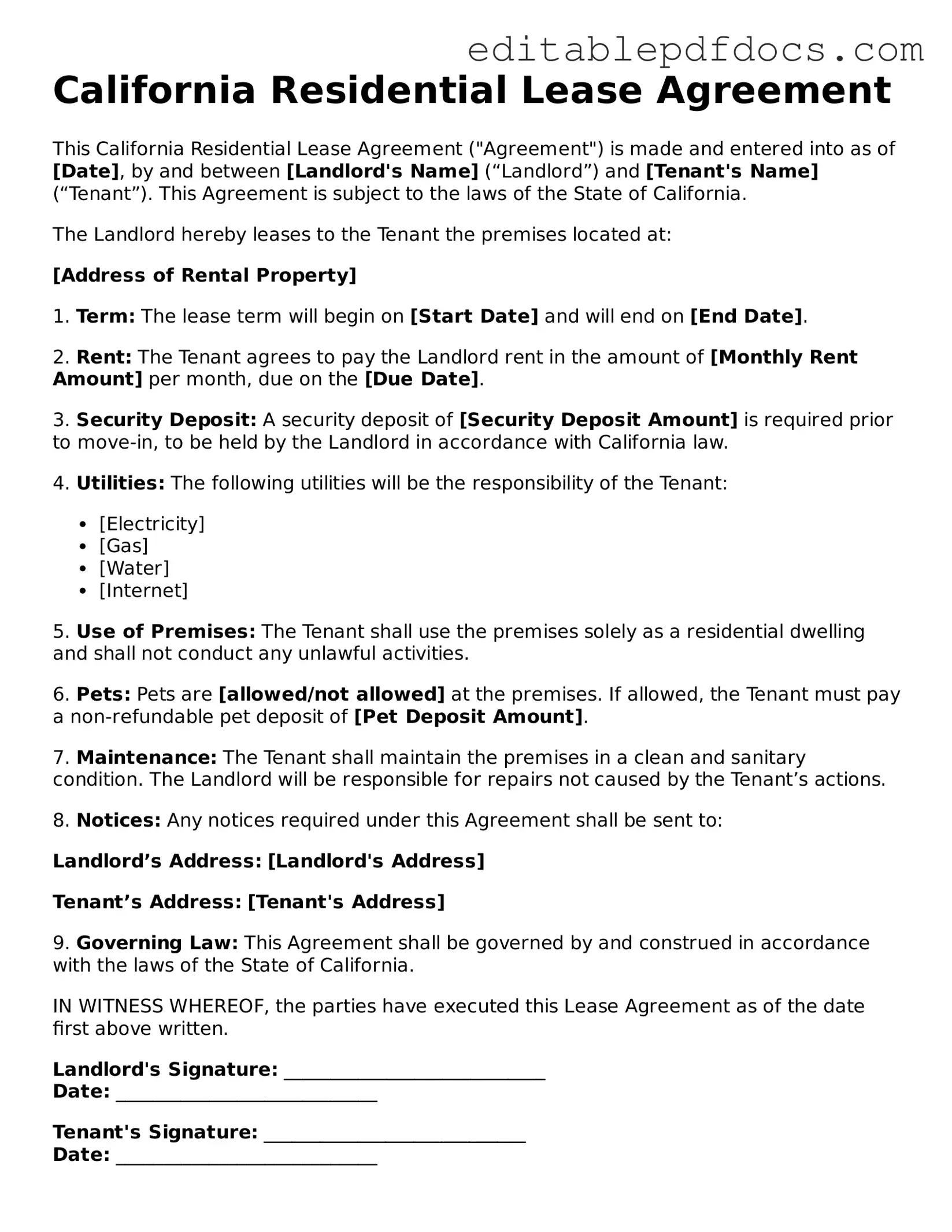The California Residential Lease Agreement is a vital document that outlines the relationship between landlords and tenants, ensuring clarity and protection for both parties involved. This agreement typically includes essential details such as the rental property’s address, the duration of the lease, and the amount of rent due each month. It also specifies the security deposit required, which serves as a safeguard for the landlord against potential damages or unpaid rent. Furthermore, the form addresses the rights and responsibilities of each party, including maintenance obligations, rules regarding pets, and the process for handling disputes. By providing a comprehensive framework, the California Residential Lease Agreement helps to foster a positive rental experience while minimizing misunderstandings. Understanding this document is crucial for anyone entering into a rental arrangement, as it lays the groundwork for a successful tenancy and protects the interests of both landlords and tenants.
